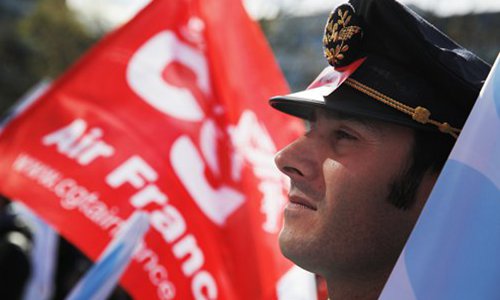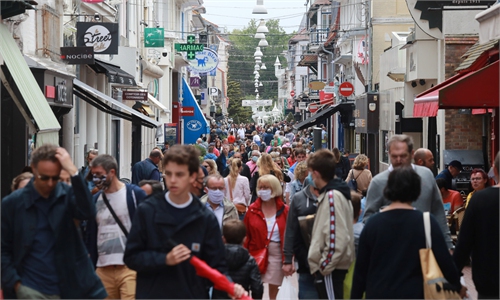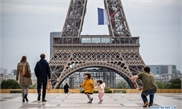Trial over 2009 Rio-Paris crash begins
Air France, Airbus face court 13 years after disaster that killed 228 people

An Air France pilot attends a demonstration next to the company headquarters in Tremblay-en-France on April 11. Photo: IC
Air France and Airbus went on a nine-week manslaughter trial on Monday, 13 years after an A330 jet plunged into the Atlantic killing all 228 people on board.
Flight 447 vanished in pitch darkness during an equatorial storm en route from Rio de Janeiro to Paris on June 1, 2009.
After a 2-year search for black boxes using remote submarines, investigators found pilots had mishandled the loss of data from iced-up sensors and pushed the 205-ton jet into a freefall, without responding to repeated "stall" alerts.
But France's Bureau of Enquiry and Analysis for Civil Aviation Safety (BEA) also revealed earlier discussions between Air France and Airbus about the reliability of the probes, and said the airline had begun swapping to an improved version just six days before its worst-ever disaster.
Experts say the relative roles of pilot or sensor error will be key to the historic trial.
It is the first time French companies face trial for "involuntary manslaughter" following an air crash. Victims' families say individual managers should also be in the dock.
The maximum fine for either company, if convicted, is just 225,000 euros ($220,600). Undisclosed larger sums have also been made in compensation and out-of-court civil settlements.
Relatives of those who died, who were mainly French, Brazilian or German, have called for "impartial justice" after campaigning to overturn an earlier decision to shelve a trial.
The trial will air differences between Air France and Airbus over causes of the crash, with the planemaker blaming pilot error and the airline pointing to confusing displays and alarms.
Flight 447 sparked a rethink about training and technology and is seen as one of a handful of accidents that changed aviation, including improvements in handling lost control.
Center-stage is the mystery of why the crew of three, with more that 20,000 hours of flying experience between them, failed to understand that the A330 had lost lift or "stalled."
That required the basic maneuver of pushing the nose down instead of yanking it up as they did during much of the fatal 4-minute plunge, creating even more error messages that fed off each other as the plane hurtled toward the Atlantic.
The BEA's report said the pilots responded inappropriately to the icing problem, but also did not have training needed to fly manually at high altitude after the autopilot dropped out.
It also singled out erratic readings of a cockpit display called the flight director, which has since been redesigned to switch itself off in such events to avoid distraction.
Neither company commented ahead of the trial, which runs until December 8 at the Paris Criminal Court.



